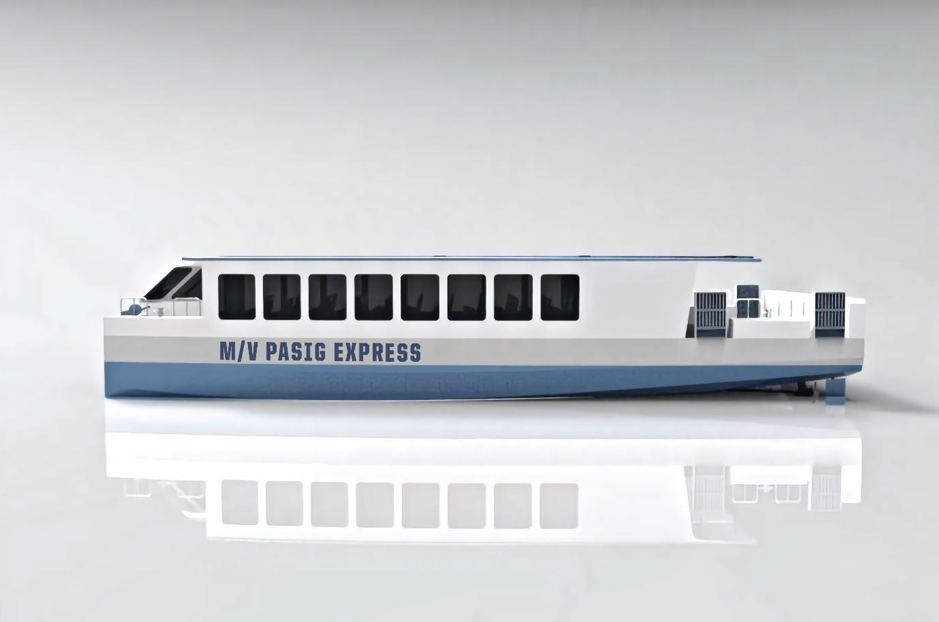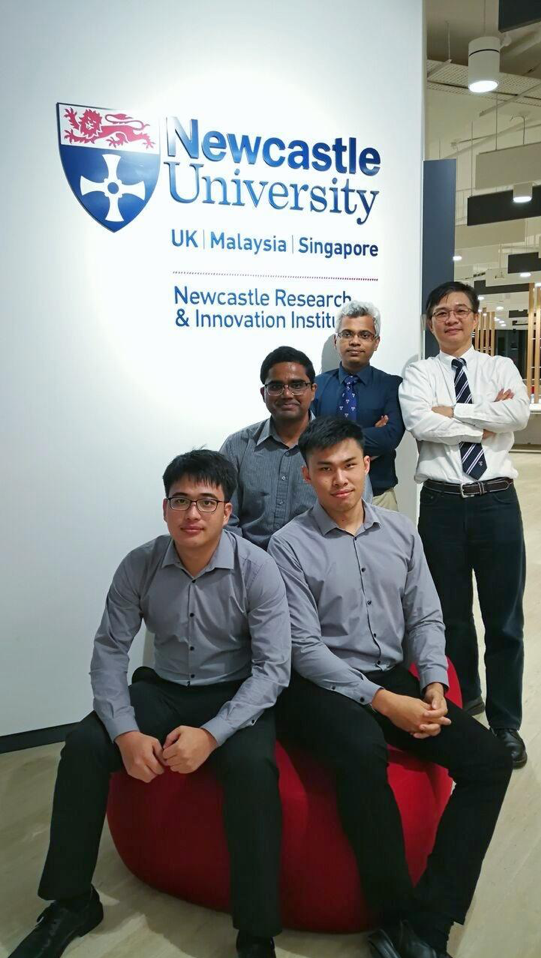
MV Pasig Express features a three-level fire-fighting system and an in-built rubbish collector to clean the river among other innovative features
Ferry incidents and fatalities remain pervasive in developing nations as maritime safety may not be a key focus area in these countries. Ferry safety continues to be a pressing issue that needs to be addressed, especially when many in developing countries rely on them as a regular mode of transportation.
With a common interest in improving maritime and passenger safety, a team of three from the Singapore Institute of Technology came together to brainstorm and conceptualise an ideal ferry for the world at the 2019 Ferry Design Competition, which was organised by the Worldwide Ferry Safety Association. Set on an international level, the team competed against their peers from around the world, and their design won the judges over with its innovative features and an emphasis on safety.
Explaining their motivation for joining the competition, team leader Vinoth Jawahar shared "Having gone through National Service in Singapore, all three of us have taken the Penguin Ferry every weekend to Tekong Island. We appreciate the importance of passenger ferry safety in the transportation system, and as young engineers, we understand the importance of being responsible in the design phase of a ferry."
"The safety of passenger ferries can only be achieved by the integration of professional engineering design, safe operation as well as strict enforcement of regulations and legislations," he added.
Big on safety: behind the design process
The team shared that the ferry design aimed to reduce congestion and ferry incidents along the Pasig River in Manila, Philippines. Running through the heart of Manila, the Pasig River is a bustling hub of commercial activities and serves as an important transport route for many locals.
"Overloading with passengers, as found out in our research, is one of the major contributing reason in fatalities, especially in developing countries. We tried to minimize this risk by removing free space at the design stage, enabling the ferry to take well above its design load," said Vinoth.
Another key safety feature of the design was a unique three-level fire-fighting system that can effectively combat fire onboard. The first tier of defence is the typical portable fire-fighting extinguishers for any small fire. The second level is an automated sprinkler system for more widespread fire. The final level is the fire-fighting grenades, a CO2 system that is installed to fight fire in an enclosed space.
"Typically, most fires start from the engine room, where it is small, controlled and unoccupied. As the fire-fighting grenades are specialised in fighting fire in an enclosed area, the CO2 system should be deployed in the engine room and be considered for all future ferry designs," said Vinoth.
Standing out from the crowd by addressing local conditions
Besides the unique safety features, the ferry design was highly tailored to the local conditions at the Pasig River, including an innovative green feature that promotes environmental sustainability.
"The rehabilitation program of the Pasig River was also taken into our design consideration," Vinoth said. In 1990, ecologists declared the river "biologically dead" as it was unable to sustain life due to the severe pollution. "As the environment and sustainability are often overlooked at the design process, we wanted to incorporate the concept of cleaning up debris and overgrown vegetation, which has always been a problem along the river."

Attached at the bottom of the ferry, the Malinis is able to collect rubbish and debris as the vessel travels along the river
With the Malinis (or "clean" in Tagalog) attached to the bottom, the team shared that the ferry is able to collect rubbish and debris in the river.
Vinoth highlighted that during the design process, the team always sought to ensure that it is "practical for construction and maintenance" while being innovative. "For example, before deciding to use aluminium as the material for the hull, we took into consideration of the capability of shipyards near the ferry operation area by consulting the stakeholders there. We took the same methodical approach for every single design choice to ensure a balance between innovation and feasibility."
"One of the technical challenges we faced was meeting the low air clearance requirement of 2.4m, which is necessary to allow the ferry to pass under the bridge for refuelling and maintenance. To overcome this, we incorporated a ballast water system into the ferry design," Vinoth shared.
The ferry design also featured other state-of-the-art innovations such as a hybrid propulsion system to optimize fuel usage at berthing or low speed. Solar panels were also proposed for an alternative clean source of energy and a rainwater harvesting roof to reduce water utilisation.

Among other innovations, the design also featured a fast loading and unloading process, rainwater harvesting roof, solar panel, fin propeller and prop-guard which made it stood out from the rest
Stepping out of their comfort zones

Meet the team: (Seated from left) Qimiao Lin, Daniel Sukartio and Vinoth Jawahar together with Assistant Professor Abdul Hannan (in blue) and Associate Professor Ivan CK Tam (in white), the team's faculty advisors from Newcastle University
However, it was not all smooth sailing for the team with their lack of experience. "As students, we were used to having all the data needed to solve a question presented to us. With a design competition, it was challenging for us as we had to step out of our comfort zone and make design choices that were not common in the maritime industry," shared Vinoth.
"Winning an international competition always creates a sense of accomplishment. It was a proud moment for us, and it was very satisfying to see our hard work paid off. We would like to take this opportunity to thank the Worldwide Ferry Safety Association for its support. We would also like to express our gratitude to our supervisors Dr. Ivan Tam and Dr. Abdul Hannan for their inspiration, advice and support throughout the period," said Vinoth.
About the team
The student members graduated from various programmes of Singapore Institute of Technology.
- Vinoth Jawahar, 24 years old, major in Offshore Engineering. He is currently working as an engineer in On Site Alignment, a multi-national company which provides engineering services to maritime industry.
- Qimiao Lin, 27 years old, major in Naval Architecture. He is currently working in Keppel Offshore and Marine, a home-grown company which fabricates ships, oil rigs as well as semi-submersibles.
- Daniel Sukartio, 25 years old, major in Naval Architecture. He is currently working in American Bureau of Shipping, a classification society established in 1862.



